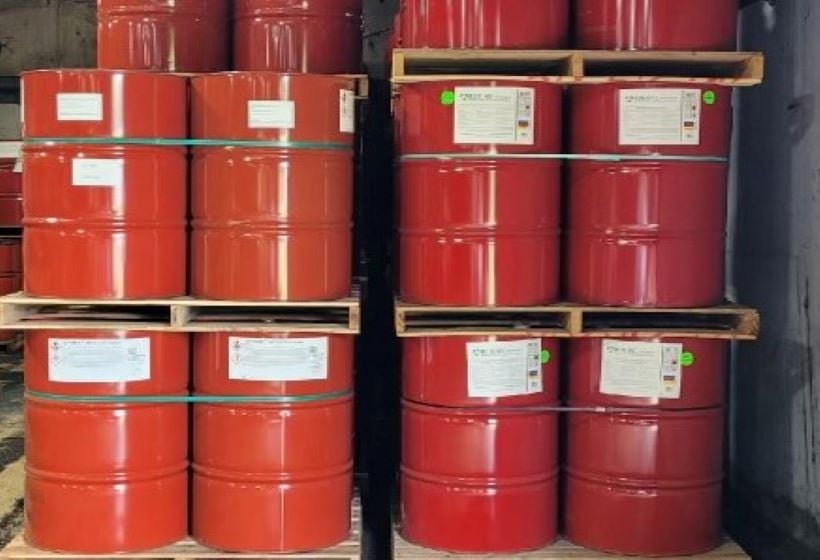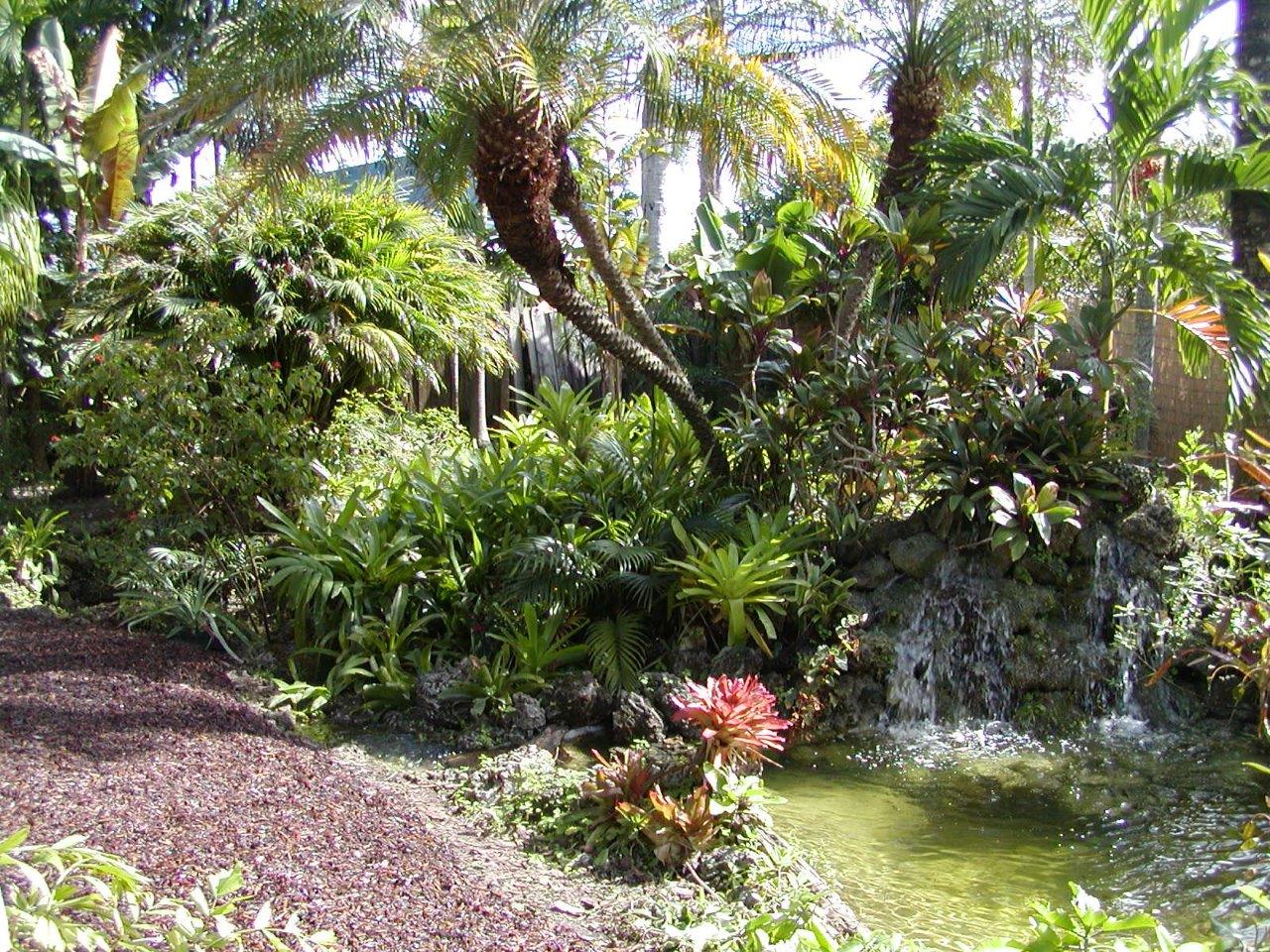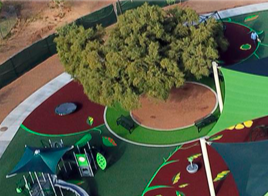Most playground PIP surfaces are comprised of a two-layer rubber system mixed with a specialized urethane binder. The ratio of urethane to granules depends on the application, the type of binder or other proprietary formulas. These mixtures are determined by size, the type of rubber that is utilized and the needs for tensile, elongation, attenuation and stability.
A large majority of the playground and recreational surfaces are installed with aromatic binders. Aromatic binders are commonly used due to expanded lower install temperatures and a lower price point. However, education of how the aromatic binders will yellow or amber when exposed to ultraviolet rays is essential.
PIP installations using aromatic binders are susceptible to ambering. This ambering will vary from slight to very substantial based on the UV index for the install time and day. This may also be noticed when partial shading occurs due to vegetation (trees), physical structures, shade structures and even clouds. All aromatic binder systems will amber, no matter the manufacturer. The type of top granule (TPV Brand or EPDM rubber) has no effect on the ambering process. Ambering is caused by a chemical change due to the specific isocyanates and polyols used in the formula of the binder. The most dramatic change is noticeable within 24 hours of application and is known to lessen as time goes on. This reduction in ambering, also known as burn back, is due to the mechanical wear of the top layer of binder off the rubber as well as further UV degradation. The most severe ambering is seen with (but not limited to) gray, cream, blue, and beige colored rubber.
Depending on the manufacturer of the aromatic binder, it is important to note that the ambering has no negative effect on the physical properties of the binder. It only affects the appearance of the surface. The longevity of the PIP system will not be affected by this initial change. This change will decrease over time and activity on the surface will further accelerate the process. While the time it takes the ambering to be gone will depend on many factors, anticipate that most of this process will be completed within 6 months to a year.
PIP Surfaces need regular maintenance & cleaning to extend their lifespan. If the ambering effect is not acceptable, it is recommended to use an aliphatic binder option or consider specialty maintenance binder products.
Choosing a binder should be a decision based on customer expectation, color, budget, and intended purpose. The most critical purpose of a safety surface is to provide safer fall surfaces for children at play. Either aromatic or aliphatic binders will work in a poured in place surface to meet that goal.
Robertson Recreational Surfacing can help you choose the right binder to fit your needs. Call us today to find out more information or get a quote.



